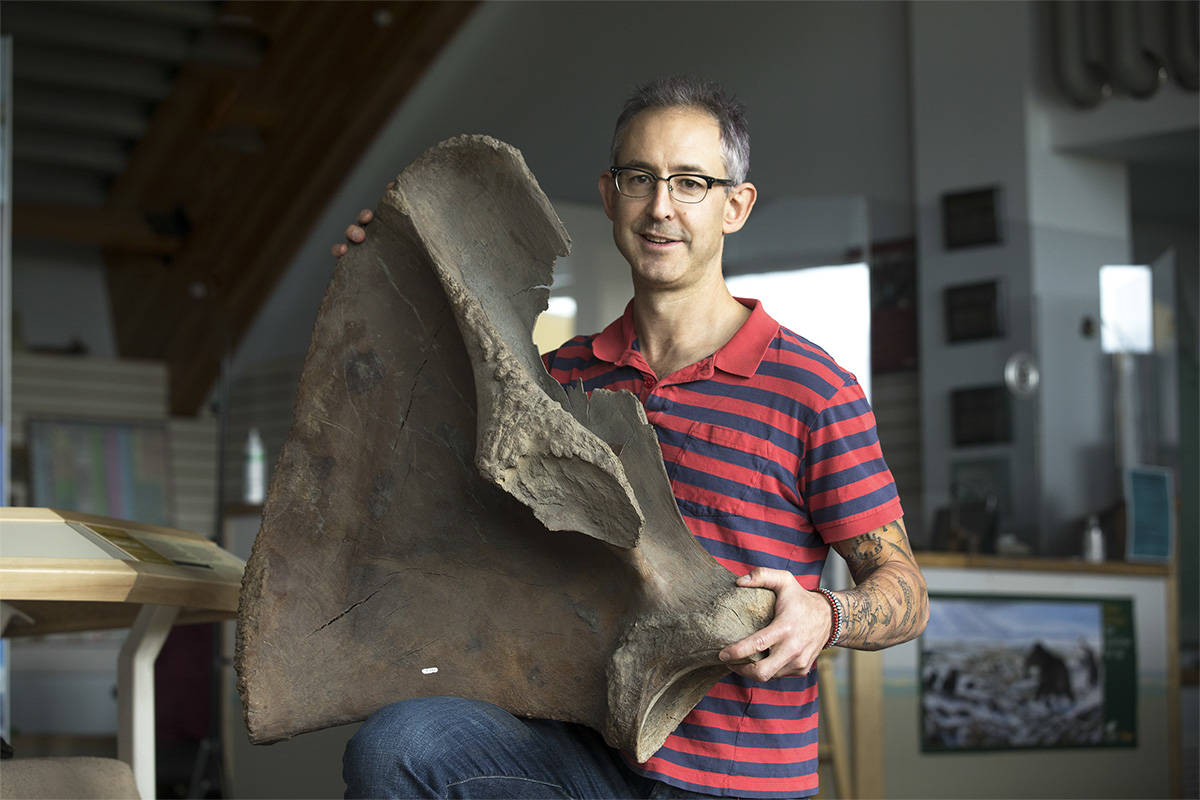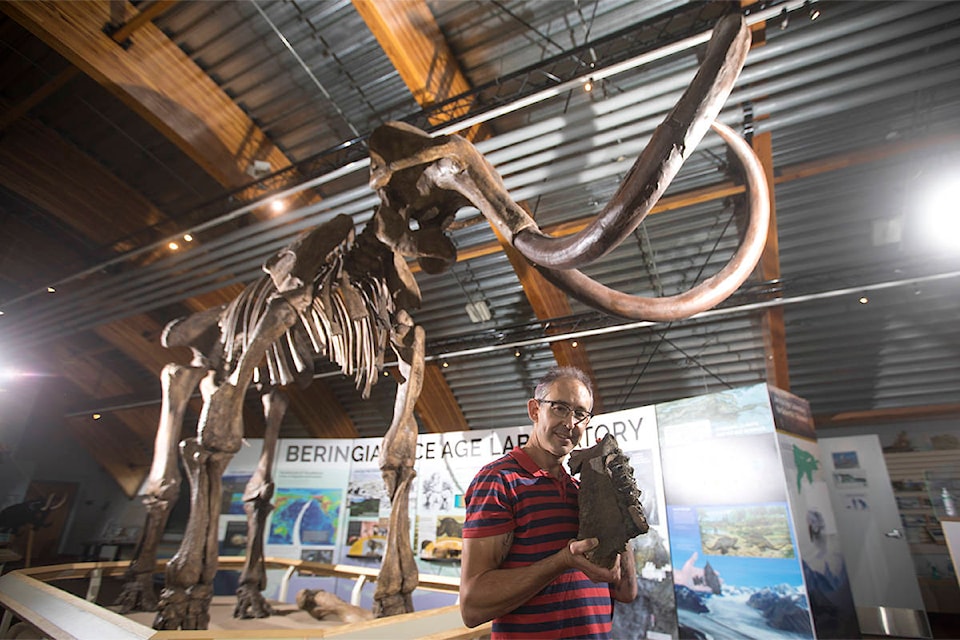Today’s Yukon climate is so perfect for ancient mastodons that Yukon paleontologist Grant Zazula admits he occasionally expects to find one in the forest when walking his dogs.
But barring any Jurassic Park developments, that won’t ever happen. Despite perfect conditions today for animals like the giant ground sloth, giant beavers, camels and mastodons, the ice age species mysteriously disappeared 10,000 years ago.
Once upon a time, they did roam the Yukon and Alaska, and new research published on Sept. 1 explains the arrival of mastodons in the North. Their ancient migration could give insight into modern-day species who are headed north as our climate changes.
The research was published in the journal Nature Communications by lead scientist and author Emil Karpinski. Zazula was a contributing author, and three Yukon-found mastodon specimens were included in the analysis.
“We get a chance to play some very prominent roles in international scientific research because of the wealth of ice age fossils that we have in the Yukon, and that’s really cool,” Zazula said, adding that fossils in the territory are often found and studied through unique partnerships between scientists, First Nations governments and miners.
The research takes advantage of a relatively new technique that first started development in the 1990s: ancient DNA analysis. Genetic information can be extracted from very old bone and tooth fragments.
Karpinski describes ancient DNA analysis as a “souped-up 23andMe,” referring to the personal DNA kits that people can use to obtain information on their ancestors and medical conditions.
“The questions we’re trying to answer are very, very similar,” he said.
It’s not easy. Fossils that are thousands of years old tend to be in rough shape; degraded and mixed with other organic matter. In total, the paper’s authors were able to piece together 33 complete samples of mastodons that span North America from Alaska down to Mexico.
Unlike mammoths, who lived in open steppe tundra and grasslands, the smaller mastodons were more at home in wooded, wetland habitats. Their fossils tend to be rarer in Yukon and Alaska, because the species had less habitat in the North.
Then, about 10,000 years ago, the species went extinct. Scientists are still trying to determine why.
The most recent paper might provide a clue for future research, but it also provides a stark warning about how some species fail to adapt to rapid climate change.
The mammoths and the mastodons lived in the Pleistocene epoch, also known as the “last ice age,” a time period that lasted from about 2.6 million years ago until 11,700 years ago.
As the common name suggests, it was generally a time of much lower temperatures and at one point, glaciers covered large parts of Europe, North America, South America, and small areas in Asia.
“In between various advances of glaciers, we get these brief, warm interludes like we have today, where there’s a boreal forest in the Yukon. It’s generally fairly warm in comparison to the ice age. Those conditions enabled mastodons to migrate from the areas in the United States up to the north,” Zazula explained.
As the climate changed, small but brave “frontier” mastodon herds travelled north seeking out new habitat. Southern populations repeated the cycle multiple times, but never survived long enough to last out the next cold period.
“They live here for a few thousand years, and then ice ages sneak up on them again and wipe them out. For us, that’s a really interesting pattern, because everyone who studies modern-day ecosystems is seeing these patterns of the movements north of certain animals,” Zazula said.
Unlike the ice age shifts, today’s climate change is being rapidly accelerated by humans. Nevertheless, many populations are responding in the same way as the mastodons did.
For example, moose are now moving up the Arctic coast, somewhere they were never seen 50 years ago. Animals like beavers, skunks, grizzly bears are also expanding their range northward, some by more than a kilometre a year.
“That’s the thing is that for paleontologists; are we actually learning anything that’s relevant to anyone? But this is one of the situations where we can discuss with our colleagues who study modern-day animals. There’s all this evidence from the paleontological record that tells us about long term patterns of how animals respond to climate change” Zazula said.
“It poses all kinds of challenges, especially for the animals that are already here. It also poses challenges for the ones on the frontier. I’m not sure if we can make a lot of predictions, but from what we’ve seen in the fossil record, these abrupt climate changes can cause a lot of problems for animals.”
Such is the case for the northern mastodons. The reason why we don’t stumble on them while hiking in our woodlands is still a mystery — climate, disease, hunting or food shortages could all have played a role.
While we don’t know the specific cause, Zazula said the new research shows that frontier populations who migrate north tend to do so in small numbers, and have less genetic diversity.
If conditions change again too quickly for them to adapt and build up the potential for new traits, they risk extinction because they aren’t able to adapt.
Contact Haley Ritchie at haley.ritchie@yukon-news.com

